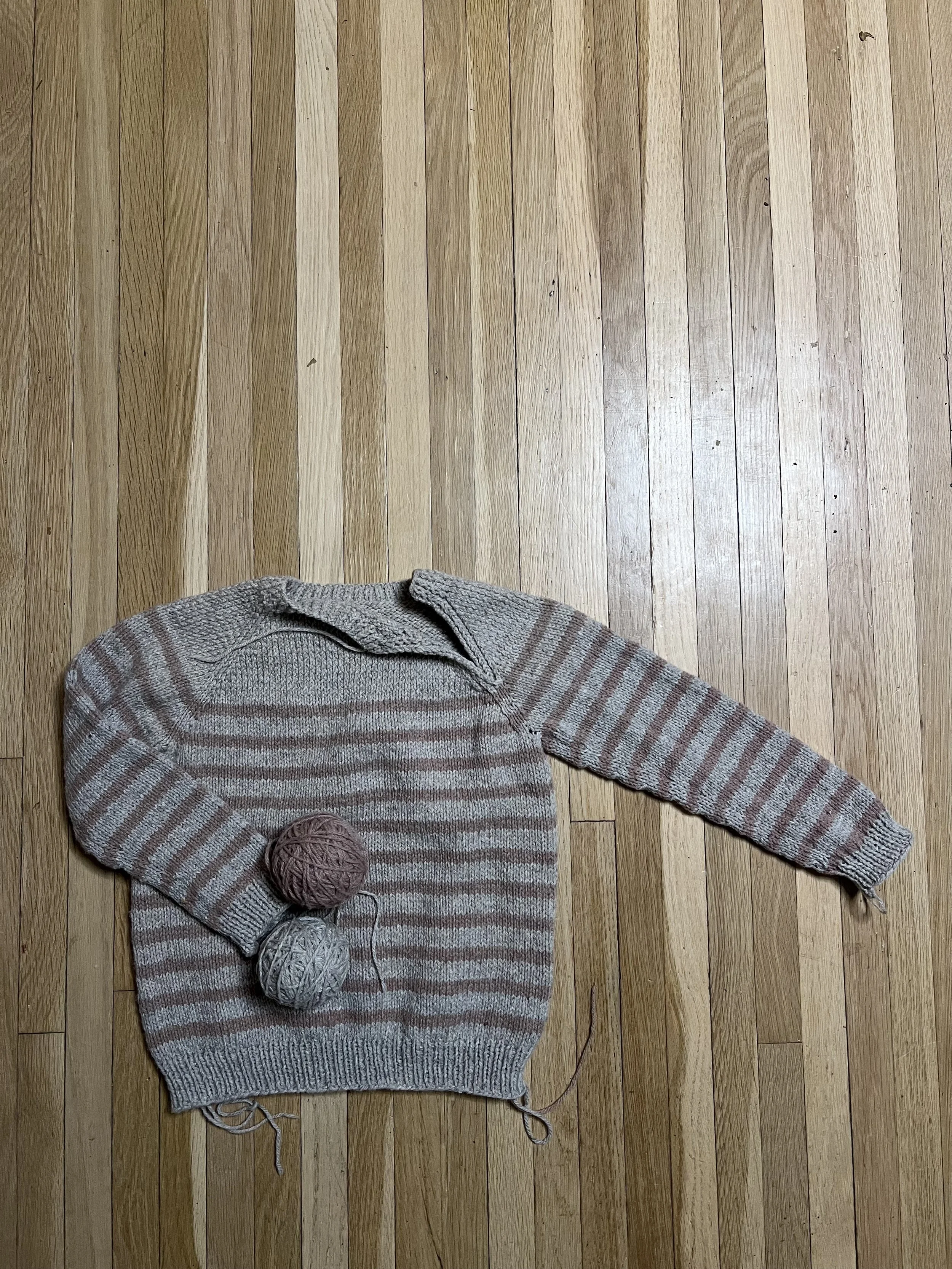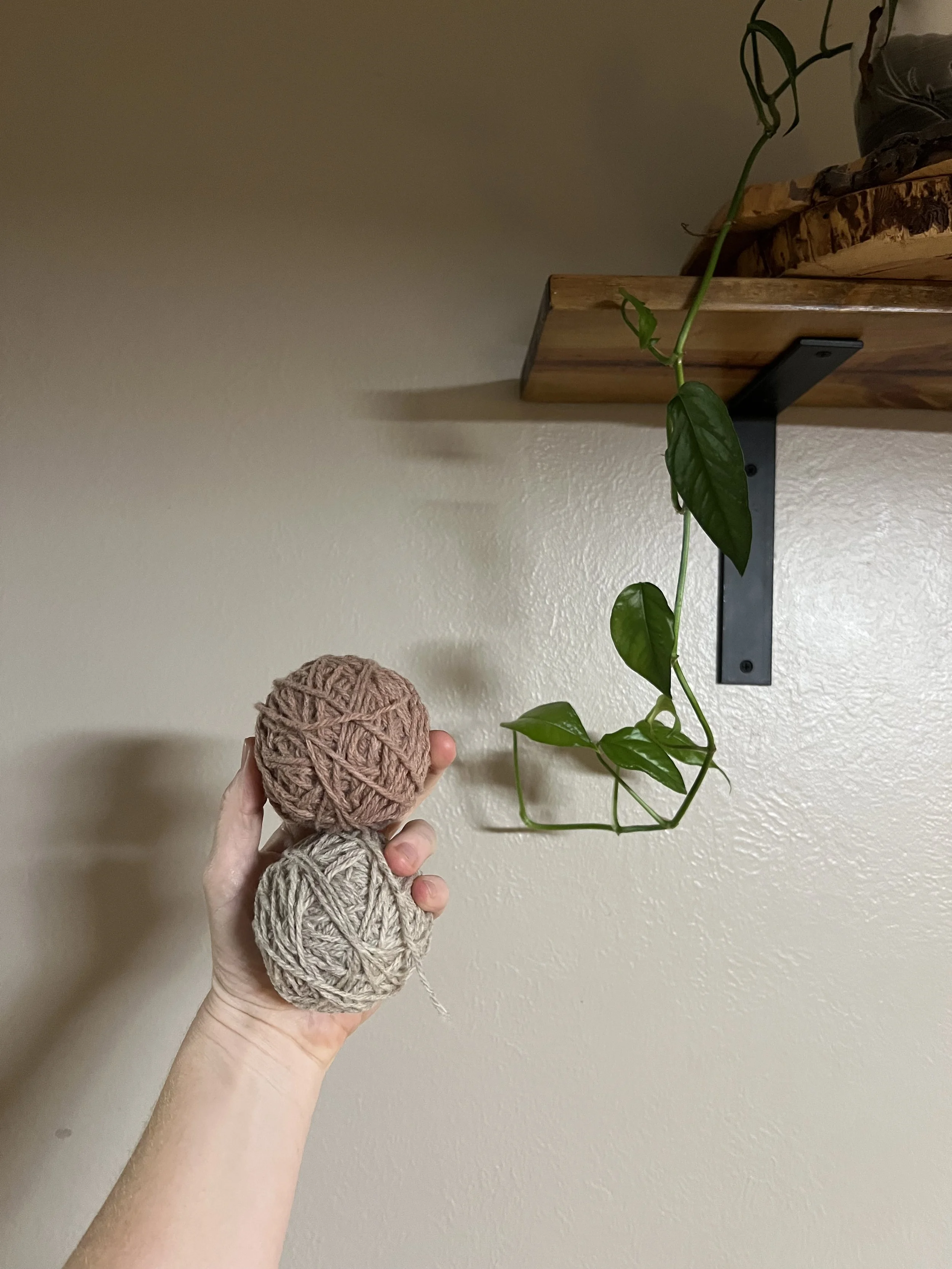Yarn Chicken
This is my third round of hand knitting a wool sweater for one of my children with yarn that I dyed myself using natural materials. This one is dyed with avocado pits and skins to achieve that lovely dusty mauve color. I’m thrilled by the results!
With the first two that I made, I dyed an extra skein just to be safe. Even with commercial dyes, it’s common to have slight differences in shade and tone between dye baths. Common enough that it’s best practice to purchase all the yarn you need for a project at once, to avoid the risk of creating an undesired line in your project. This, of course, is magnified significantly when hand dyeing, and even more still when working with natural materials, that can produce wildly different colors based on factors completely out of the dyer’s control—like the environment where a dye plant grew and how much rainfall it received that year.
But with both projects, I ended up with so much extra yarn that it seems silly to dye an extra skein, especially considering that this would be the smallest of the sweaters. And, perhaps most significantly (at least in terms of how much weight this factor pulled in ultimate decision) I did not have an extra skein on hand to dye. I decided to just use the amount of yarn that the pattern called for and be done with it.
As I neared the end of the first sleeve, however, I began to question that decision. The ball was getting quite small, and I was starting to worry that it might not be enough. For a moment, I considered adding another yarn mixed in on the second sleeve for some asymmetrical flair. In the end, the though, I decided to just try my luck with yarn chicken. And it paid off!
The sweater’s now fresh off the needles and I’m eagerly waiting for my daughter to wake up so we can try it on her in the morning. I finally wised up and made it several sizes too big, so hopefully it lasts her a good while. (I’m pretty sure my oldest has already outgrown his, which I finished last year. I was hoping to get at least two winters out of it. Sigh.) Once it passes the try-on test, then I’ll move on to blocking, weaving in the ends, and adding the buttons, and she’ll be complete!
Note: The sweater pattern is the Seaside Sweater by PetiteKnit.


